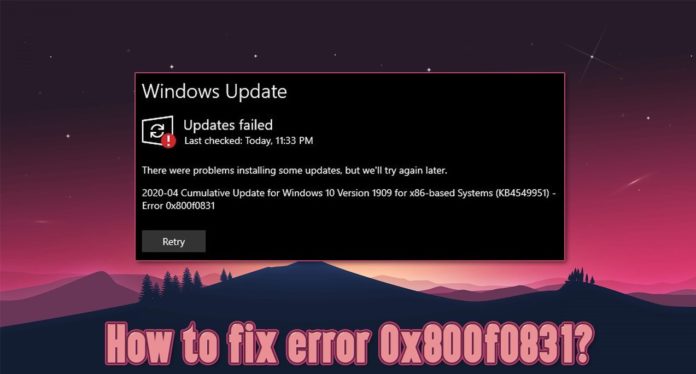Best ways to fix update errors will be described in this article. The updates have been flowing thick and fast since the debut of Windows 10 and Microsoft’s switch to a software-as-a-service strategy for its flagship operating system. Whether you like it or not, Microsoft delivers a significant update for Windows 10 at least once per year.
Numerous minor upgrades are also available, ranging from important security fixes to less significant cosmetic and minor adjustments.
You won’t even notice anything occurring when everything is functioning properly.
However, when Windows update errors occur, the outcome might range from stopped updates to a broken PC!
Check if you Have an Update Error
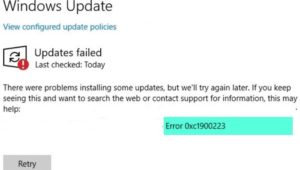
If you think your computer may be participating a Windows Update problem, you can verify it by looking at your update status: Also check CMS Platforms
Activate the Start Menu.
After typing Check for Updates, choose it.
Check the Windows update status; if there are any errors, they ought to be noted here.
If not, a green checkmark and a notice stating that you are current will appear.
Even though there might not be a clear error, you might notice a message stating that your most recent update is either still pending or that it failed to download or install.
You can handle all of these variances with the help of the methods we’ll be discussing next.
Note the Update Error Code (If Any)
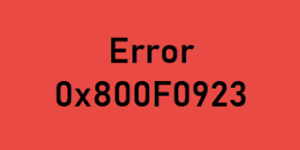
Make a note of any Windows update error codes you notice when monitoring your update status.
You can search for these codes to learn why your updates aren’t functioning specifically.
Typically, error codes take the form “0x80070070,” though there may be more than one.
If you type these into a tracking engine, you’ll probably get detailed explanations of what went wrong.
Check for stuck or Failed Updates
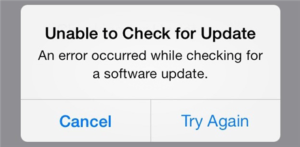
An error number may not actually show an error, but that doesn’t mean you don’t have a problem.
Windows retains a record of your update history, making it simple to see what has been going on while you were away.
Select the settings cog by opening the Start Menu.
Then click Windows Update after choosing Update & Security.
Select View Update History after that.
You can check here to discover if any download or installation attempts have been unsuccessful.
You might get a hint about the precise issue from the update’s nature in some cases.
Before You Do Anything, Reboot
What should you do first to fix a Windows update error now that you’ve verified your update status and recorded any error codes that may have appeared?
Rebooting your computer might be all that’s required to fix the issue.
A dependence that is sometimes locked until the next time Windows starts up prevents an update from downloading and installing.
It might also need to wait for the installation of a different update to be finished, but that won’t happen until your next restart.
You might see “Update and then restart” as an option if you click the power button first, then the Start Menu.
This is a clear signal that there are pending updates that need to be applied before operations may resume.
Are Your Update Setting Correct?
Your update settings may be incorrect if you don’t see any errors but your copy of Windows doesn’t appear to be updating itself:
Activate the Start Menu.
When it displays, type Windows Update Settings and then choose it.
Verify your active hours are set according to your preferences and that your updates have not been suspended.
To view further setup options, select Advanced Options.
You must turn on the setting that allows updates to be downloaded via metered connections if your internet connection is set to “metered.”
Just make sure you’re prepared to pay any applicable data rates.
Try the Update Troubleshooter

Microsoft has built a special tool into Windows that may be used to identify and fix Windows Update issues because they are aware that their update system occasionally has glitches. This is another way to fix windows update errors.
This is how to use it:
Select the Settings cog by launching the Start Menu.
Select Update & Security next.
Select Additional troubleshooters after selecting Troubleshoot.
Finally, select Windows Update and Run the troubleshooter under Get up and running.
Obey the directions displayed on the screen.
The Update Troubleshooter can frequently address minor Windows Update problems without your involvement. Also check Bilasport alternatives
For Windows 7 and 8.1 Try the Online Wizard
There are still many individuals using older versions of Windows, even though the majority of this article concentrates on the problems with the Windows 10 update.
Your main update problems, if you’re still using Windows 7, are presumably caused by the fact that Windows 7 support terminated on January 14, 2020.
The same is true of Windows 8, which was replaced by 8.1.
We strongly advise updating to a more recent version of Windows rather than fighting the issue any longer.
If you decide to proceed, Microsoft has supplied a useful online guided troubleshooter that will pose a number of inquiries to you in an effort to identify the most likely causes of your problems.
You Might Simply Be Out of Space
Windows takes a tonne of hard drive space when downloading and installing an update.
After all, it needs to download the update data, have working space for the updated files, and store backups in case an update goes wrong.
Start by visiting 7 Ways to Create More Disk Space in Windows 10 to free up a little extra space if you don’t have enough for Windows Update to do its job.
Delete the Software Distribution Files
The files used by Windows Update are saved in a directory for programme distribution.
Simply deleting this folder is a moderately nuclear option. This is another way to fix windows update errors.
The Windows Update benefit must be stopped before you can proceed, so restart in Safe Mode and take the following actions:
Launch Windows Explorer and select your Windows folder.
The SoftwareDistribution folder should be selected.
Remove the whole folder.
Normalize Windows’ restarting.
Your PC won’t be harmed in any way by doing this, but the Windows Update service will be forced to recreate the update working files from start.
Check Your System Files for Corruption

User reports indicate that corrupted or missing system files may interfere with your update procedure and result in Windows update errors.
System file loss or corruption can occur for a number of reasons, but what counts is how easily the issue can be fixed.
The System File Checker is an app that comes with Windows.
Use These Command Prompt Commands to Fix or Repair Corrupt Files has detailed advice on how to ensure sure your system files are in good health.
You’d assume that the Windows Update tool could handle this on its own, but it appears that occasionally manual assistance is needed.
Make Sure Hardware Drives are Up to Date
While Windows Update can update the majority of things on its own, it has no control over some third-party hardware drivers and tools.
The most recent Windows update might not be working if you haven’t updated your GPU drivers or any other critical component in a while.
Although auditing all of your drivers can be time-consuming, there are technologies available to help you automate and streamline the procedure.
One free tool that has worked well for us is Driver Booster.
See How To Automatically Update Device Drivers In Windows 10 for more information.
Try Rolling Back Your Last Update
This is another way to fix windows update errors. Your most recent update may have failed because something went wrong with your most recent update.
You include a 10-day window in which to undo the modifications made by the most recent update.
This implies that it’s likely that you won’t be able to do this when the next update rolls along, but in some cases you might have to if a faulty update is quickly followed by a fix.
Activate the Start Menu.
When it displays, type “Windows Update Settings” and click on it.
From the sidebar, choose Recovery.
Search for
Revert to Windows 10’s earlier version.
Choose Get Started if it’s an option.
Just carry out the directions from here.
If it’s too late, you can also explicitly uninstall particular updates to remove them.
Remove particular updates
In Windows 10, you can immediately remove unwelcome or troublesome updates.
Although we do advise you to make certain that a specific update is the problem, it is extremely simple.
For instance, if many other users are complaining that the update is causing Windows Update to malfunction or is otherwise defective.
Uninstall Specific Updates
Switch to the Control Panel.
Choose Programs.
Select Updates installed to view them.
A index of updates that can stand uninstalled should be visible.
There won’t be every update posted here, but some should.
To uninstall any update, simply right-click on it and choose that option.
Manually Download and Install Updates
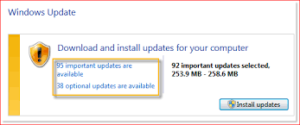
Even while the automated update service is useful, there are instances when you simply must do things on your own.
It’s possible that many people aren’t even aware that Microsoft provides its cumulative updates as separate downloads. This is another way to fix windows update errors.
That completes total sense when you think about it.
Since not all Windows 10 machines have sufficient internet access.
A offline installer eliminates the need to download the identical update data for each machine when a user has to update numerous PCs.
Visit the Microsoft Update Catalog and enter the most recent update’s KB number to manually download and install a Windows 10 update.
You can Google the KB number to find it.
Then, just click the Get option to download the necessary update, and install it just like you would any other downloaded programme.
Perform a Repair Install of Windows
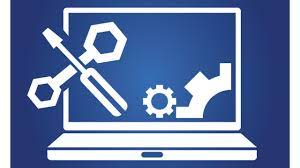
If everything else fails and you absolutely have no other options, you can actually utilise the Windows 10 installer to fix your Windows installation without losing any data or programmes. This is another way to fix windows update errors.
You only need to launch the installation from your Windows 10 media.
Microsoft offers a free download of Windows 10 media if you don’t already have it.
When prompted, select “upgrade” for your Windows installation, and then select “keep my files and applications” thereafter.
Please remember that this should only be used as a final option because it occasionally goes wrong.
Hook Up with Microsoft Support
If everything else fails, you may always set aside some time to speak with a Microsoft Support representative.
Our experience with their chat assistance is that it is quick and effective.
Even with full control of your computer, the consultants can swiftly identify and fix problems.
This is particularly helpful if the reason your most recent Windows update failed was due to a known issue that Microsoft must fix on their end.
If there is nobody else you can do, the consultant will let you know so you may move on to more crucial tasks.

